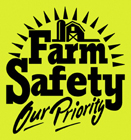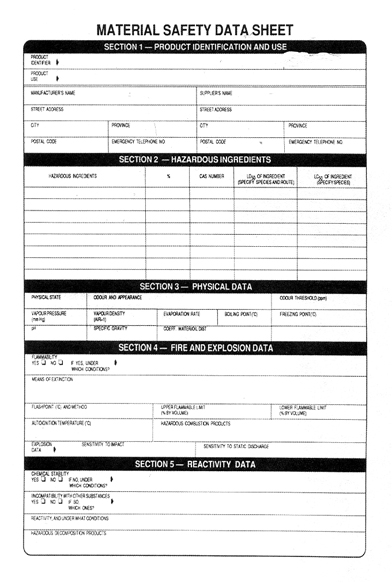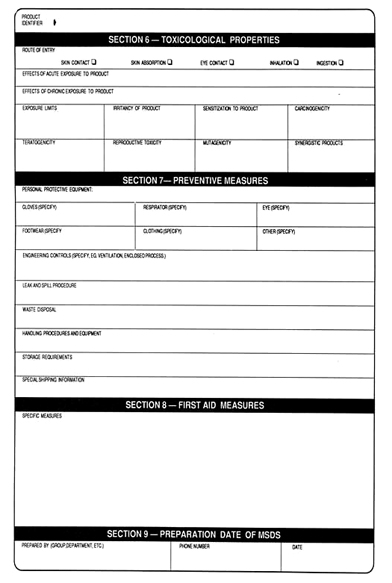Training Room 2: Keeping Safe and Healthy—Standards and Practices in an Agricultural Environment
Session 6: Workplace Chemical Health and Safety—WHMIS Introduction (Part B)
WHMIS—Handling Hazardous Materials
Learning Target

Dynamic Graphics/
liquidlibrary/Thinkstock
In this session you will learn how the WHMIS system is used on a farm to ensure that chemicals are handled safety and that appropriate caution is taken around biological hazards. You will be able to answer the following questions:
- How can risks be managed on the farm when transporting, storing, handling, and disposing of hazardous materials?
- What can be done to best protect the worker in case of accidental spills and exposure?
Listen, Watch, and Interact
Choose one of the following online resources to learn how these four components of WHIMS are used to educate workers and keep them safe:
- classification and symbols
- labels
- MSDS—Material Safety Data Sheet
- training
Use the following web resources to learn more:
- Making WHMIS Work
- Health and Safety 101 (click on the Work Hazards tab)
- Workplace Health and Safety Bulletin: WHMIS Information for Workers
- Implementing a WHIMIS Program
WHMIS Labels and Material Safety Data Sheets (MSDS)

Alberta Employment and Immigration, WHMIS- Information for Employers (Edmonton: Government of Alberta, 2009).15. Reproduced by permission.
WHMIS Labels
WHMIS labels must be on all containers holding controled hazardous materials. These labels can be made by the supplier or at the workplace. The label contains the following details:
- the main hazards of controlled products
- how to handle the material safely
- referral to the Material Safety Data Sheet (MSDS) for further information if required
Material Safety Data Sheet (MSDS)
The MSDS must be supplied by the manufacturer, but a standard form can be completed by the purchaser of the hazardous material. These data sheets should be kept in a place that all workers can access. Find out where they are on your worksite.
This data sheet supplies the following information about the hazardous material:
- supplier details
- hazardous ingredients
- identification of the hazards
- handling, storage, and disposal instructions
- personal protection procedures
- first-aid measures
- accident procedure in case of fire or spillage


Alberta Employment and Immigration, WHMIS- Information for Employers (Edmonton: Government of Alberta, 2009).24. Reproduced by permission.
See a full-sized sample MSDS sheet: Material Safety Data Sheet Sample.
Time to Practise
WHMIS on Your Agricultural Worksite
It is important the you know about the hazardous materials and the WHMIS procedures on your worksite.
How does the proper use of WHMIS classes, labels, material data sheets, and worker education protect your health and safety when you use hazardous chemicals in your workplace?
To Do
Learn about a hazardous material.
- Choose a hazardous material currently used on your agricultural worksite.
- Be able to describe how this material is used on the worksite.
- Carefully read the WHMIS label.
- Find the Material Safety Data Sheet (MSDS).
- Determine
- what precautions you need to take when using the material
- how to safely transport and store the material
- what to do if an accident occurs with the material
Discussion
Share your learning about your chosen hazardous material.
Use the information you learned to describe how your chosen hazardous material is safely used, stored, transported, and disposed of on your worksite. Describe an accident that could occur and how it would be safely handled.
Choose one of the following ways to share:
- By using WHMIS Discussion #2—Understanding WHMIS for a Hazardous Chemical
- With a co-worker on your agricultural worksite. Complete the Discussion Acknowledgement Form have it signed and return it to your teacher.
- If you want to demonstrate your understanding of workplace chemical safety in your Risk Management Tutorial Project, use your understanding of the hazardous material you researched above to describe the WHMIS standards and practices for Workplace Chemical Safety in your agricultural workplace.